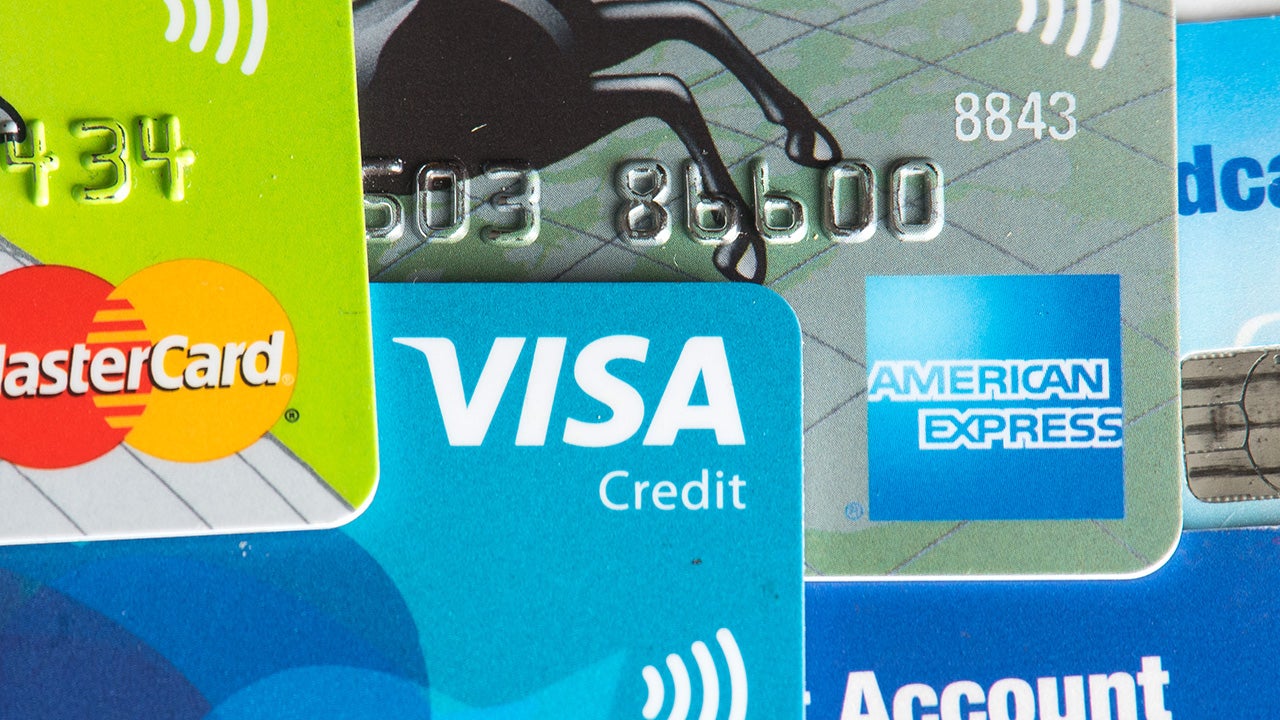Credit businesses are the lifeblood of modern economies, facilitating transactions and empowering individuals and businesses to achieve their financial goals. From traditional banks to innovative online lenders, these institutions offer a diverse range of credit products and services that cater to a wide spectrum of needs.
Understanding the complexities of credit businesses, their operations, and the evolving landscape of the industry is crucial for navigating the financial world. This exploration delves into the core aspects of credit businesses, examining their role in the economy, the products and services they offer, and the strategies they employ to manage risk and achieve profitability.
Definition and Scope of Credit Businesses
Credit businesses play a vital role in modern economies by facilitating the flow of capital and enabling individuals and businesses to access financial resources beyond their immediate means. They provide a range of financial services, including loans, credit cards, and lines of credit, which allow borrowers to make purchases or investments they might otherwise be unable to afford.
Types of Credit Businesses
Credit businesses encompass a diverse range of institutions that operate under different structures and regulations. These institutions provide various credit products and services to meet the needs of a wide range of customers. Here are some of the most common types of credit businesses:
- Banks: Banks are traditional financial institutions that offer a comprehensive range of financial services, including deposit accounts, loans, credit cards, and investment products. They are regulated by national and international authorities to ensure the safety and soundness of the financial system.
- Credit Unions: Credit unions are member-owned financial cooperatives that provide financial services to their members. They are often focused on serving specific communities or groups, such as employees of a particular company or residents of a certain area. Credit unions typically offer lower interest rates on loans and higher interest rates on deposits compared to banks.
- Finance Companies: Finance companies specialize in providing loans to individuals and businesses that may not qualify for traditional bank loans. They often charge higher interest rates than banks but may be more flexible in their lending criteria. Finance companies can focus on specific sectors, such as auto financing, consumer lending, or business loans.
- Online Lenders: Online lenders have emerged as a significant force in the credit market, offering loans and other financial services through digital platforms. They often have less stringent lending requirements and can provide faster approval times than traditional institutions. Online lenders use technology and data analytics to assess creditworthiness and streamline the lending process.
Legal and Regulatory Framework
Credit businesses operate within a complex legal and regulatory framework designed to protect consumers and ensure the stability of the financial system. Regulations vary by country and jurisdiction but typically cover aspects such as:
- Consumer Protection: Regulations aim to prevent predatory lending practices and protect borrowers from unfair or abusive terms. This includes requirements for clear disclosure of loan terms, interest rates, and fees, as well as provisions for consumer recourse in case of disputes.
- Capital Requirements: Regulators require credit businesses to maintain sufficient capital reserves to absorb potential losses and ensure their financial stability. These requirements vary based on the size and risk profile of the institution.
- Lending Standards: Regulations often set standards for lending practices, including requirements for responsible lending, creditworthiness assessment, and debt collection procedures. These standards aim to prevent excessive risk-taking and promote responsible lending practices.
- Anti-Money Laundering and Know Your Customer (KYC) Requirements: Credit businesses are subject to anti-money laundering and KYC regulations that require them to verify the identity of their customers and monitor transactions for suspicious activity. These regulations help to combat financial crime and protect the integrity of the financial system.
Credit Products and Services

Credit businesses offer a wide range of financial products and services designed to meet various needs, from short-term financing to long-term investments. These products allow individuals and businesses to access funds when they need them, but it’s crucial to understand the terms and conditions associated with each product to make informed decisions.
Types of Credit Products
Credit products can be broadly categorized into several types, each with its own unique features, terms, and purposes.
- Loans: Loans are a common form of credit that involves borrowing a specific amount of money from a lender and repaying it over a predetermined period, typically with interest.
- Credit Cards: Credit cards are revolving credit products that allow individuals to make purchases and pay them back over time. They offer a line of credit that can be used repeatedly, with interest charged on the outstanding balance.
- Lines of Credit: Lines of credit are similar to credit cards but typically offer larger credit limits and are often used for specific purposes, such as home improvements or business expenses.
- Mortgages: Mortgages are secured loans used to finance the purchase of real estate. They are typically long-term loans with fixed or adjustable interest rates.
Terms and Conditions
Understanding the terms and conditions associated with each credit product is essential to making informed financial decisions.
- Interest Rates: Interest rates are the cost of borrowing money. They are expressed as a percentage of the principal amount borrowed and can vary depending on the credit product, borrower’s creditworthiness, and market conditions.
- Fees: Credit products often come with various fees, such as annual fees, transaction fees, late payment fees, and overdraft fees. These fees can significantly impact the overall cost of borrowing.
- Repayment Schedules: Repayment schedules Artikel how much money is due each month and when payments are due. Different credit products have different repayment schedules, ranging from fixed monthly payments to variable payments based on outstanding balances.
Comparison of Credit Products
Credit products are designed for different financial needs and purposes. It’s important to compare and contrast the various options to determine which one best suits your situation.
- Loans are suitable for specific, one-time expenses, such as car purchases or home renovations. They offer fixed monthly payments and a predetermined repayment period.
- Credit Cards provide flexibility for everyday purchases and offer rewards programs and other benefits. However, high interest rates can make them expensive if balances are not paid off promptly.
- Lines of Credit offer flexibility for larger expenses or unexpected needs. They can be used as needed, but interest rates can be higher than for loans.
- Mortgages are long-term loans for real estate purchases. They typically have lower interest rates than other credit products but require significant upfront payments and a long-term commitment.
Credit Risk Management: Credit Businesses
Credit risk is the possibility that a borrower will not repay their debt obligations as agreed, resulting in financial losses for the lender. This risk is a fundamental concern for all credit businesses, as it can significantly impact their profitability and even their survival.
Assessing and Managing Credit Risk
Credit businesses employ various methods to assess and manage credit risk. These methods aim to understand a borrower’s creditworthiness and make informed lending decisions.
Credit Scoring
Credit scoring is a statistical method used to assess a borrower’s creditworthiness based on their credit history, income, and other financial data. Credit scores are typically represented as a numerical value, with higher scores indicating a lower risk of default.
Credit Reporting
Credit reporting agencies collect and maintain detailed information about borrowers’ credit history, including payment history, credit utilization, and outstanding balances. Credit businesses use this information to evaluate a borrower’s creditworthiness and make lending decisions.
Due Diligence
Due diligence involves conducting a thorough investigation of a borrower’s financial situation and business operations. This may include reviewing financial statements, conducting background checks, and verifying information provided by the borrower.
Mitigating Credit Losses
Credit businesses implement various strategies to mitigate credit losses and protect their financial interests.
Loan Loss Reserves
Loan loss reserves are provisions set aside by credit businesses to cover potential losses from borrowers who default on their loans. These reserves are based on historical default rates and the current economic environment.
Collection Efforts
When borrowers fall behind on their payments, credit businesses employ collection efforts to recover the outstanding debt. These efforts may include sending reminders, contacting the borrower, and initiating legal proceedings.
Legal Remedies
In cases of default, credit businesses may pursue legal remedies to recover their losses. These remedies may include filing lawsuits, obtaining judgments, and pursuing liens against the borrower’s assets.
Credit Business Models

Credit businesses operate using various models to provide financial services to individuals and businesses. These models are characterized by their unique approaches to lending, risk management, and customer engagement.
Traditional Lending
Traditional lending models are characterized by their reliance on physical branches, extensive documentation, and manual underwriting processes. These models have historically dominated the credit landscape, offering products like mortgages, auto loans, and personal loans.
Advantages of Traditional Lending
- Established Reputation: Traditional lenders often have a long history and a strong reputation, building trust among customers.
- Experienced Staff: These institutions typically employ experienced professionals with expertise in credit risk assessment and customer service.
- Strong Regulatory Compliance: Traditional lenders operate under strict regulatory frameworks, ensuring adherence to industry standards and consumer protection laws.
Disadvantages of Traditional Lending
- High Operating Costs: Maintaining physical branches and employing a large workforce can lead to high operating costs, potentially affecting profitability.
- Slow Loan Processing: Traditional lending processes often involve extensive paperwork and manual review, resulting in longer loan approval times.
- Limited Reach: Traditional lenders may have limited reach, particularly in underserved communities or regions with limited physical infrastructure.
Online Lending
Online lending models have emerged as a significant force in the credit market, leveraging technology to streamline lending processes, expand reach, and offer innovative products. These models typically operate through digital platforms, automating loan applications, credit scoring, and loan disbursement.
Advantages of Online Lending
- Faster Loan Processing: Online lending platforms automate many processes, significantly reducing loan approval times compared to traditional methods.
- Lower Operating Costs: Online lenders have lower overhead costs due to reduced reliance on physical branches and a smaller workforce.
- Wider Reach: Online lending platforms can reach a wider customer base, including those in underserved communities or geographically dispersed locations.
Disadvantages of Online Lending
- Increased Risk: Online lending models may face higher risks due to the reliance on alternative data sources and the potential for fraud.
- Lack of Personal Interaction: Online lending platforms may lack the personalized touch and customer service that traditional lenders offer.
- Regulatory Challenges: Online lending models are subject to evolving regulations, which can create challenges for compliance and operational efficiency.
Alternative Finance
Alternative finance models encompass a diverse range of lending and investment options, including peer-to-peer (P2P) lending, crowdfunding, and invoice financing. These models often target underserved borrowers or provide financing solutions not traditionally offered by banks.
Advantages of Alternative Finance
- Access to Credit: Alternative finance models can provide access to credit for individuals and businesses who may not qualify for traditional loans.
- Innovative Solutions: Alternative finance models offer unique financing solutions tailored to specific needs, such as crowdfunding for startups or invoice financing for small businesses.
- Increased Competition: Alternative finance models introduce competition to the traditional credit market, potentially leading to lower interest rates and improved services.
Disadvantages of Alternative Finance
- Higher Interest Rates: Alternative finance models may offer higher interest rates due to the higher risks associated with lending to underserved borrowers.
- Lack of Regulation: Some alternative finance models operate outside traditional regulatory frameworks, potentially exposing investors to higher risks.
- Limited Transparency: Transparency and information disclosure can be challenges in some alternative finance models, particularly in the case of P2P lending platforms.
Impact of Technological Advancements
Technological advancements have profoundly impacted credit business models, leading to the emergence of fintech and digital lending platforms. These advancements have enabled faster loan processing, reduced costs, and increased customer reach.
Fintech and Digital Lending Platforms
Fintech companies are leveraging technology to disrupt traditional credit models, offering innovative products and services. Digital lending platforms automate loan applications, credit scoring, and loan disbursement, enabling faster and more efficient lending processes.
Impact on Credit Business Models
- Increased Efficiency: Digital lending platforms streamline loan processes, reducing costs and improving efficiency.
- Improved Customer Experience: Fintech companies offer personalized customer experiences and convenient digital interfaces.
- Expanded Reach: Digital lending platforms can reach a wider customer base, including those in underserved communities.
Credit Business Operations
Credit business operations encompass a series of interconnected processes that drive the entire lifecycle of a credit product, from its inception to its eventual closure. These processes involve various stakeholders, including borrowers, lenders, and regulatory bodies, and are crucial for ensuring the profitability and sustainability of credit businesses.
Loan Origination
Loan origination is the initial stage in the credit business process, where potential borrowers apply for credit products. This stage involves collecting borrower information, assessing their creditworthiness, and determining the terms of the loan.
- Application Processing: Credit businesses receive loan applications through various channels, including online platforms, physical branches, and mobile apps. The applications typically require borrowers to provide personal and financial information, such as income, employment history, and credit score.
- Initial Credit Assessment: A preliminary assessment of the borrower’s creditworthiness is conducted to determine their eligibility for the loan. This assessment typically involves reviewing credit reports, income verification, and debt-to-income ratios.
- Loan Approval and Documentation: Based on the credit assessment, the credit business decides whether to approve the loan application and, if so, the terms and conditions of the loan. Once approved, the loan agreement is signed, and the borrower receives the loan proceeds.
Underwriting
Underwriting is a critical process that involves evaluating the risk associated with a loan application and determining whether to approve it. This process aims to ensure that the borrower has the ability and willingness to repay the loan.
- Credit Risk Analysis: Underwriters meticulously analyze the borrower’s credit history, financial statements, and other relevant data to assess their creditworthiness. This analysis includes evaluating factors such as debt-to-income ratio, credit score, employment history, and collateral value.
- Loan Structuring: Based on the risk assessment, underwriters determine the appropriate loan terms, including interest rates, loan duration, and repayment schedule. They also consider the borrower’s specific needs and circumstances when structuring the loan.
- Credit Approval or Denial: The underwriter makes the final decision on whether to approve or deny the loan application. If approved, the loan is typically funded within a predetermined timeframe.
Servicing
Loan servicing involves managing the loan after it has been originated and underwritten. This includes collecting payments, tracking loan balances, and handling customer inquiries.
- Payment Processing: Credit businesses receive loan payments from borrowers through various channels, including online portals, automatic debits, and physical payments. These payments are then processed and applied to the borrower’s loan account.
- Loan Balance Management: Loan servicing departments track the outstanding loan balance, interest accrual, and other relevant loan details. They also maintain accurate records of all loan transactions and payments.
- Customer Support: Servicing departments provide customer support to borrowers, answering questions about their loans, addressing payment issues, and assisting with any other loan-related inquiries.
Collections
Collections are the processes involved in recovering overdue loan payments from borrowers who have fallen behind on their obligations.
- Early Stage Collections: When a borrower misses a payment, credit businesses typically initiate early-stage collection efforts, such as sending reminder notices or contacting the borrower directly to inquire about the missed payment.
- Escalated Collections: If the borrower remains delinquent, collection efforts may be escalated, involving repeated contact attempts, potential legal action, or referral to external collection agencies.
- Debt Recovery: In cases where borrowers are unable to repay their loans, credit businesses may pursue debt recovery strategies, such as negotiating payment plans, pursuing legal action, or selling the delinquent debt to a third-party collection agency.
Role of Technology
Technology plays a vital role in streamlining credit business operations, enabling efficiency, automation, and improved decision-making.
- Automation: Credit businesses utilize automation technologies to automate repetitive tasks, such as loan application processing, payment processing, and data entry. This frees up human resources to focus on more strategic and complex activities.
- Data Analytics: Advanced data analytics tools enable credit businesses to analyze large volumes of data, identify patterns, and make data-driven decisions. This includes credit risk assessment, customer segmentation, and fraud detection.
- Customer Relationship Management (CRM): CRM systems help credit businesses manage customer interactions, track customer preferences, and provide personalized services. This improves customer satisfaction and loyalty.
Challenges in Credit Business Operations
Credit businesses face various challenges in maintaining operational efficiency and compliance with regulations.
- Regulatory Compliance: Credit businesses operate in a highly regulated environment, requiring adherence to complex rules and regulations. Compliance with these regulations can be challenging and requires significant resources and expertise.
- Fraud Prevention: Credit businesses are constantly at risk of fraud, including identity theft, loan application fraud, and payment fraud. Implementing robust fraud prevention measures is essential for mitigating these risks.
- Managing Credit Risk: Credit businesses must effectively manage credit risk to ensure profitability and sustainability. This involves balancing the need to lend money with the risk of loan defaults.
Credit Business Trends and Innovations
The credit industry is constantly evolving, driven by technological advancements, changing consumer preferences, and evolving regulatory landscapes. Emerging trends are shaping the future of credit businesses, creating both opportunities and challenges for industry players.
Growth of Online Lending, Credit businesses
The rise of online lending platforms has revolutionized the way consumers access credit. These platforms utilize technology to streamline the lending process, making it more efficient and accessible to a wider range of borrowers. Online lenders often have more flexible eligibility criteria and can offer faster approval times compared to traditional banks.
- Increased Competition: The emergence of online lenders has intensified competition within the credit industry, forcing traditional institutions to adapt their offerings and processes to remain competitive.
- Data-Driven Lending: Online lenders leverage data analytics to assess creditworthiness and tailor loan products to individual borrowers’ needs, enabling them to reach underserved segments of the population.
- Financial Inclusion: Online lending platforms can provide access to credit for individuals who may have been previously excluded from traditional financial services due to limited credit history or other factors.
Rise of Alternative Credit Scoring Models
Traditional credit scoring models rely heavily on credit history, which can be a barrier for individuals with limited credit history, such as young adults or immigrants. Alternative credit scoring models use a wider range of data points, such as payment history for utilities, rent, and telecommunications, to assess creditworthiness.
- Expanding Access to Credit: Alternative credit scoring models can help expand access to credit for individuals who may not have a traditional credit history, enabling them to build a positive credit profile.
- More Accurate Risk Assessment: By incorporating a broader range of data, alternative credit scoring models can provide a more comprehensive and accurate assessment of creditworthiness, potentially reducing the risk of loan defaults.
- Data Privacy Concerns: The use of alternative data sources raises concerns about data privacy and the potential for discrimination, requiring careful consideration of ethical and regulatory implications.
Increasing Use of Artificial Intelligence
Artificial intelligence (AI) is playing an increasingly significant role in the credit industry, enabling automation, improved risk assessment, and personalized customer experiences. AI-powered tools can analyze vast amounts of data to identify patterns and predict borrower behavior, allowing lenders to make more informed decisions.
- Automated Decision Making: AI can automate tasks such as loan origination, underwriting, and fraud detection, streamlining processes and reducing operational costs.
- Enhanced Risk Management: AI algorithms can analyze large datasets to identify potential risk factors and predict loan defaults, enabling lenders to make more informed lending decisions.
- Personalized Customer Service: AI-powered chatbots and virtual assistants can provide personalized customer support, answer questions, and resolve issues 24/7.
Closing Notes

The world of credit businesses is dynamic and constantly evolving, driven by technological advancements, changing consumer preferences, and evolving regulatory frameworks. As the financial landscape continues to transform, credit businesses are at the forefront of innovation, shaping the future of financial services and empowering individuals and businesses to thrive in a globalized economy.
Clarifying Questions
What are the different types of credit businesses?
Credit businesses encompass a variety of institutions, including banks, credit unions, finance companies, online lenders, and even some non-traditional players like peer-to-peer lending platforms.
How do credit businesses make money?
Credit businesses generate revenue primarily through interest charged on loans and credit cards. They also earn fees for various services, such as account maintenance, transaction processing, and late payment penalties.
What are the risks involved in credit businesses?
Credit businesses face a number of risks, including credit risk (the risk of borrowers defaulting on their loans), interest rate risk, and operational risk. Managing these risks effectively is crucial for the sustainability and profitability of credit businesses.
 Norfolk Publications Publications ORG in Norfolk!
Norfolk Publications Publications ORG in Norfolk!

